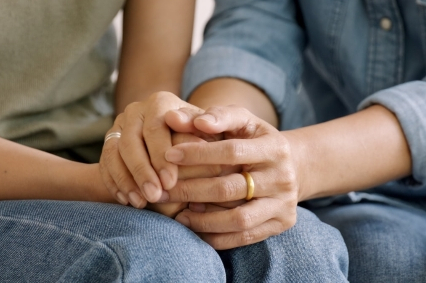Endometriosis in Teens
Endometriosis is an ongoing condition that happens when uterine tissue grows outside the uterus, especially in the abdominal and pelvic areas. Painful or heavy periods are the most common symptom. In the United States, it is estimated that 6.5 million women and girls as young as 8 suffer from endometriosis, and 89 million women worldwide.1
Endometriosis often begins with the start of menstrual periods and gets worse over time. In adults, endometriosis has been associated with chronic pelvic pain and problems becoming pregnant. While no one knows the exact cause of endometriosis, it is common in families.
The good news for adolescents having symptoms of endometriosis is that Children’s Mercy is here to help. We offer several treatment options and a team of experts from multiple disciplines, all trained to specifically address endometriosis in children and teens.
Symptoms and diagnosis
Research studies have indicated that 38% of those with endometriosis have symptoms before the age of 15. However, it takes an astounding average of over nine years to receive a correct diagnosis and treatment. This means that much of a child’s youth may be spent suffering unexplained, often crippling pain which greatly hinders development.1
The most common symptoms of endometriosis are painful menstrual periods associated with cramping and lower abdominal pain. Occasionally, your child may have other symptoms such as nausea, vomiting and changes in urination. While mild cramping may be common with normal menstrual cycles, endometriosis pain is severe, does not respond to usual mild pain relievers or hormone therapy, and over time, may lead to daily pelvic pain.
Endometriosis can only be diagnosed by looking directly into the abdomen during a procedure called a laparoscopy. During this procedure, the doctor can take a small piece of tissue from the affected area. This is called a biopsy and examination of the tissue under a microscope can confirm endometriosis.
Why treatment is important
While there is no cure for endometriosis, early diagnosis and treatment have been shown to improve the lives of affected teens. Girls who have endometriosis from a young age often have difficulty getting an accurate diagnosis. This is, in part, due to the still-common belief that endometriosis does not affect this age group, but it is also because they are too embarrassed or confused to talk about their symptoms.1
Delayed or inadequate treatment can result in:
- Chronic daily pain.
- Severe menstrual symptoms.
- Compromised fertility.
- Missed school days.
- Diminished quality of life.
Several medications can help girls with endometriosis to manage their condition. An individualized treatment plan, which may include physical therapy and pain management as well as medications, can help your child cope much better with the symptoms of endometriosis and return to normal activities.
Endometriosis Program at Children’s Mercy
At Children’s Mercy, we recognize the need to create a centralized program where teenagers can be diagnosed and treated for endometriosis. We also bring a multidisciplinary, comprehensive approach to our program. This enables your child to benefit from a variety of therapies, treatment options and perspectives that care for the whole person.
We offer early surgical diagnosis of adolescents with painful and problem periods. This approach to treatment includes:
- Laparoscopic diagnosis.
- Medical management and hormone therapy.
- Physical and occupational therapy.
- Pain management.
- Psychological support and ongoing care to help manage the problems associated with endometriosis.
Ultimately, the program aims to treat teens with endometriosis and help them to manage their symptoms so they can live normal, active lives. Plus, we provide information and help your child get support services designed specifically for teens.
Treatment options
Treatment begins with finding the right diagnosis. Many adolescents have been told that “this is just regular cramps,” which can be a barrier to seeking care and may cause stress. They often have not heard of endometriosis or have not seen doctors who specialize in teen endometriosis. Some treatment options we offer include:
- Laparoscopy and tissue removal:
Removal of all visible endometriosis at the time of diagnostic surgery often helps reduce symptoms. - Medical management and hormone therapy:
Some adolescents with endometriosis may opt to use a variety of medications and hormonal treatments to treat cramping and suppress menstruation. These include non-steroidal anti-inflammatory drugs (NSAIDS), oral contraceptive pills, progesterone pills or shots, and progesterone implanted IUDs. This often helps with the pain and puts the endometriosis in an “inactive” state. Occasionally, teens may need more aggressive options to suppress all reproductive hormones. Injections, oral medications or IUDs may be recommended. - Physical and occupational therapy:
Physical therapy often helps the pelvic muscles to relax and is helpful to relieve pain. Occupational therapy can be applied to support body structures and encourage activities. - Pain management:
Pain management and alternative therapies help manage the way your child perceives pain and provides methods for coping with pain.
Your child's care team will consider all treatment options to develop a plan that is just right for your child. From your first visit to the Endometriosis Program, a team of doctors, nurses and other professionals will work with you to continually monitor your child's progress, adjusting course as needed.
Endometriosis: Avery and MK’s story
Siblings Avery and MK both struggled with the pain of endometriosis. Holistic care from the Children’s Mercy Gynecology department has helped them get back to normal teen activities.

Endometriosis: Taylor’s story
When 13-year-old Taylor Stewart seemed to be getting sicker and sicker with abdominal pain, nausea and weight loss, she turned to Children’s Mercy and the Endometriosis Care program. That’s where she was diagnosed and treated for the debilitating condition, endometriosis. Today, she’s feeling much better, getting back to her busy routine as an active teen.

